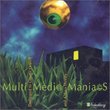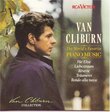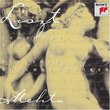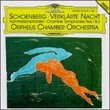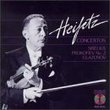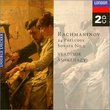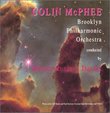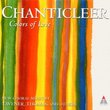| All Artists: Esa-Pekka Salonen, Gidon Kremer, Dawn Upshaw Title: Kaija Saariaho: Château de l'âme / Graal Théâtre / Amers Members Wishing: 2 Total Copies: 0 Label: Sony Original Release Date: 1/1/2001 Re-Release Date: 8/28/2001 Genres: Pop, Classical Styles: Vocal Pop, Chamber Music, Forms & Genres, Concertos, Instruments, Strings, Symphonies Number of Discs: 1 SwapaCD Credits: 1 UPC: 074646081723 |
Search - Esa-Pekka Salonen, Gidon Kremer, Dawn Upshaw :: Kaija Saariaho: Château de l'âme / Graal Théâtre / Amers
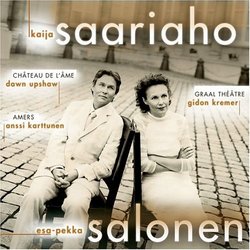 | Esa-Pekka Salonen, Gidon Kremer, Dawn Upshaw Kaija Saariaho: Château de l'âme / Graal Théâtre / Amers Genres: Pop, Classical
Kaija Saariaho was born in Helsinki in 1952, one of numerous notable musicians to have come out of Finland recently, a distinction she shares with Salonen, one of her earliest and most steadfast supporters. She studied in ... more » |
Larger Image |
CD DetailsSynopsis
Amazon.com Kaija Saariaho was born in Helsinki in 1952, one of numerous notable musicians to have come out of Finland recently, a distinction she shares with Salonen, one of her earliest and most steadfast supporters. She studied in Finland, Germany, and Paris, where she became acquainted with the composers of "spectral" music, who focus on music as sound and examine its constituent elements in microscopic detail. This influenced her own writing, which she describes as "more timbral than melodic, more focused on color than line." Indeed, the two instrumental works on this disc seem created entirely from sound effects and color effects. Graal Theatre is a substantial violin concerto that exploits all imaginable, and many unimaginable, resources of the instrument and demands superhuman tonal and technical acrobatics of the soloist. Kremer, of course, clears all these hurdles with ease and aplomb; the beauty of his tone comes through at every opportunity. These are almost nonexistent in the cello concerto, Amers, in which the soloist is reduced to running, scratching, and squeaking. The five-song set Chateau de L'ame is the most accessible: sung beautifully, it is mainly lyrical, atmospheric, languid, and mournful, with big leaps in the vocal line and much lighter orchestration than in the concertos. The composer confirms that "vocal music written to strong texts seems more emotional," because the words enhance the music and because "the human voice touches us differently than any other instrument." It would have been helpful to know what the songs are about, but unfortunately, the booklet carries no texts, though it includes a long interview with the composer in three languages. --Edith Eisler Similar CDsSimilarly Requested CDs
|
CD ReviewsTwo superb works along with one marking the end of her fines Christopher Culver | 12/10/2005 (4 out of 5 stars) "Here we have 3 pieces by contemporary Finnish composer Kaija Saariaho performed by each work's dedicatee--Gidon Kremer, Dawn Upshaw, and Anssi Karttunen--and three excellent ensembles--the BBC Symphony Orchestra, the Finnish Radio Chamber Choir & Symphony Orchestra, and the Avanti! Chamber Orchestra--all conducted by long-time associate Esa-Pekka Salonen. I've been unhappy with Saariaho's recent work, where she has seemingly abandoned electronics and concentrated increasingly on melody, but the music of the early 90s, with its focus on gorgeous timbre and frequent use of electronic possibilities, is a standout of contemporary music. Two works here show Saariaho at her best, but one is the harbinger of her lesser music of today. All things considered, "Amers" for cello, orchestra, and electronics (1993) is for me Saariaho's masterpiece. With its prominent cello part written for Anssi Karttunen, the two-movement piece can be considered a cello concerto, but the relationship between soloist and orchestra that Saariaho aims for here is richer than any other concerto I've ever heard. While the orchestra bangs out gentle and ghostly ocean-like rhythms ("amers" is a French word for "navigation buoy"), the cello plays "as a sailor charting a course through a sea of sounds". The piece makes use of a special microphone specially developed by IRCAM that is capable of isolating each of the cello's four strings and amplifying or electronically altering each separately, which expands the cello's sound to new levels: furious bowing across the bridge gives bell-like chimes, a sound produced by pizzicato elastically reverbs. Over the course of the work, electronic alterations pull the cello "off-course"; in the first movement, only minor interference occurs, while in the powerful second movement the sound of the cello is violently shaken about. Karttunen and Avanti! give a moving performance that alone serves to make this a highly recommended disc. I should mention that if you like "Amers" you should check out Saariaho's related "Pres" for solo cello, whose material is mainly taken from the solo part of "Amers" with some additions of even greater beauty, allowing one to concentrate on this particular element of the concerto separate from the orchestral elements. "Graal Theatre" for violin and orchestra (1994) more closely approaches the concerto tradition than "Amers", but has its own twist: during the first movement instead of a dialogue between soloist and orchestra, the orchestra emulates the material displayed by the soloist. Saariaho puts it that the soloist "leaves tracks" that the ensemble follows. Only in the second movement, "Impetuoso", do we find confrontation. Gidon Kremer performs superbly here as always, and I was impressed by the BBC Symphony Orchestra. It is a pity that this performance, recorded in 1996, sat around for five years before being released. A version for chamber orchestra was later written that is featured on a recent Ondine disc and is worth hearing, although I find this original version for full orchestra works better due to its greater percussion. "Chateau de L'ame" for solo soprano, 8 female voices and orchestra (1996) marks the end of Saariaho's overall concern with otherworldly timbre and the beginning of her disappointing turn to overt melody. The text of these five songs come from Vedic love poems and magical writings from Ancient Egypt. In spite of the divine voice of Dawn Upshaw, I find this music bland. One only has to look at "Lonh" for soprano and electronics of the same year, also written for Upshaw (and wonderfully performed by her on an Ondine disc) to see how limited this new music is. With the certain exception of "Sept Papillions" for solo cello and the cautious exception of her first opera "L'amour de loin", most of what I've heard from Saariaho recently is of considerably lesser quality than what she wrote before. In spite of the weak "Chateau", however, the two earlier works on this disc are of great elegance and beauty. If you've never heard Saariaho's music before, I'd recommend first trying the discs "Du crystal ...a la fumee/Nymphea/Sept Papillions" or "Private Gardens", both on Ondine. Still, this disc is worth hearing once you've fallen in love with her writing." Music of shapeshifting beauty Phil Avetxori | 11/26/2002 (5 out of 5 stars) "The music of Kaija Saariaho was almost too much for me to absorb at once, when I first listened to this disc. This isn't because it's busy or overblown, although there's plenty of detail and sumptuous orchestral beauty to her music. Rather, on the first piece in particular, it's almost as if different moods are overlayed, translucent and continuously shifting from foreground to background,with severe modernist abstraction (which I love, by the way) and lush neo-romanticism bleeding over into one another. Saariaho makes "Graal Theatre"'s continuous transformations work much more subtly than that grasping description makes it sound. The piece has an almost ritualistic quality to it, with the decisively rigorous violin moving with fluid angularity amongst a variegated landscape of orchestral color and occasional tension. "Chateau De L'Ame" is the most accesible piece, with Dawn Upshaw's lovely soprano supported by understated orchestrations that, while beautiful, carry an uncanny tinge. "Amers" closes out the disc with the most obscure music here, with incredible explorations of timbre within a bright sound haze. According to the liner notes, it has more in common with Saariaho's earlier work than the other pieces. After managing to let myself sink into this hauntingly beautiful music, I certainly plan on exploring more of what is available from this amazing composer." How rich the Nordic realm! Grady Harp | Los Angeles, CA United States | 09/20/2002 (5 out of 5 stars) "Kaija Saariaho is well known to Los Angeles audiences as her fellow countryman and music spiritual partner Esa-Pekka Salonen has provided many performances of this gifted composer's output in the Los Angeles Philharmonic's seasons. It is well to hear these two collaborate on this recording as there is a special affinity obviously present. Saariaho's music is an acquired taste. Not that it is unapproachable on first hearing: she is after all an impressionist of wondrous colors and a titan of orchestration. The acquired taste in this instance is like a reference to drug addicition. Once the listener relaxes with the relative lack of meter and just bathes in the luxury of her created sound, the works beg for encores. Though all three works on this disc are very fine, for me the pinnacle is the song cycle 'Chateau de l'ame' which benefits from the impeccably beautiful art of soprano Dawn Upshaw. This is a song cycle that should stand with Ravel's "Sheherazade" and Berlioz' "Nuits d'ete". Finland remains a rich resource for some of the best music and musicians before us today. Highly recommended."
|

 Track Listings (9) - Disc #1
Track Listings (9) - Disc #1
